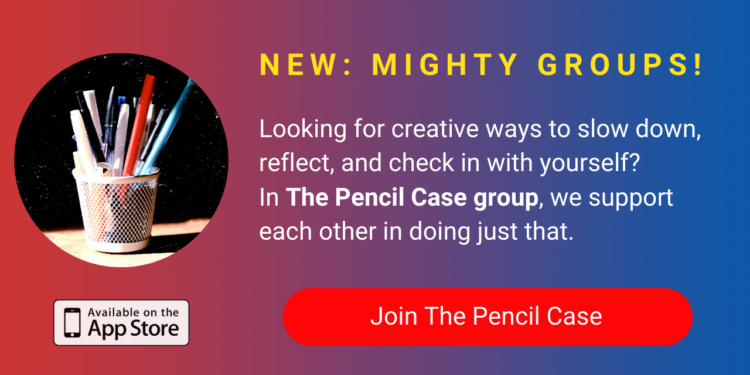Have you ever wanted to climb onto a rooftop and scream at the top of your lungs, letting all of your inner emotions come out, without anyone hearing? If so, then I welcome you to the world of journaling.
OK. So, you’re not going to be physically screaming when you journal.
But journaling is an effective self-care practice that allows you to get everything out of your head without judgment or the anxiety of explaining how you feel in the “right” way. Sometimes, you don’t know how you feel and explaining that to another person can be tough. That’s what journaling is for!
Journaling can also have a similar weight-off-of-your-shoulders feeling that screaming on a rooftop might have. In fact, journaling is proven to have a number of health benefits.
If you have a lot of questions about journaling, look no further. Today, I’m here to tell you everything you need to know about journaling: the benefits of journaling, the four main types of journaling and when you should journal. Let’s dive in.
Why journal?
If you’re looking to get into journaling, it’s important to first understand your “why.” Do you want to journal to get your emotions out without judgment? To stay more organized? To adjust your way of thinking and recognize more of the positives in your life? Once you find your “why,” you’re more likely to stick with journaling.
For me, journaling allows me to release my thoughts and emotions without talking to someone. This doesn’t mean I’m afraid to talk about my feelings — sometimes, I just don’t want to talk, and I’d much rather write everything out. As an introvert, I do a lot of self-reflecting and being inside of my own head, so writing is one of my most valued self-care practices.
Especially for those who see themselves as givers — you put a lot of time and energy toward others and less on yourself — journaling is a beneficial way to focus on yourself: your values, your goals, your weaknesses and strengths. Letting your raw, innermost thoughts come out can allow you to recognize patterns, reach clarity and make effective change.
What you’ll need to journal.
You’re probably saying to yourself, “Jane, isn’t it obvious what I need to have to journal?” And you’re right. It is obvious — you do need a journal and a tool to write with.
However, in the paraphrased words of Marie Kondo, you want to write in a journal and with a tool that spark joy. Maybe you like writing with sparkly gel pens and in composition notebooks with no lines. Or, maybe you’re into writing with mechanical pencils and in hardcover spiral notebooks. Heck, if you’re worried you’ll criticize your handwriting too much, whip out your phone, laptop or tablet, and journal on there! (That’s what I did when I first started journaling.) Use what you need to get the most out of journaling.
Also, what environment you’re in can affect how you journal. Lately, I’ve been journaling at night in my room with my fairy lights on while I’m listening to my “sad girl hours” playlist. But I’ve also journaled on my phone at the start of class when I was feeling especially emotional. (It was a classic “sucking back the tears, so no one sees me crying” moment.) Where and how you journal is up to you, my friend.
The four types of journaling.
While you can have a lot of different kinds of journals — a travel journal, a dream journal, a food journal and dozens more — there are four main types of journaling that dictate the format of your journal.
1. Bullet journaling.
If you’re a lover of lists, such as myself, then you’ll love bullet journaling. Have you ever seen a video where a person creates an artsy journal by writing titles in cursive and using a ruler to draw straight lines? That, my friend, is bullet journaling.
Essentially, you’re creating a journal that’s full of lists. That can mean listing what you’re grateful for in your life, what you’d like to achieve within the next year, what happened today that brought you joy — basically anything you want.
Do you need to make your bullet journal look as aesthetically pleasing as what you see on the internet? No. (But if you want to, go ahead.) Simply put, bullet journaling is a basic way to stay organized and focused.
2. Guided journaling.
Need help figuring out what to journal about? Then guided journaling is for you.
Guided journaling is exactly how it sounds. You’re given a question or topic, such as, “What would it mean for you to bloom?” Then, as you journal, you try to stick to answering that question or exploring that topic. This’ll keep you centered on the certain parts of yourself and your life you want to unravel and improve upon. 
3. Wreck journaling.
If you were a Tumblr tween a few years back, then you probably know what a wreck journal is. Or, more specifically, what a “Wreck This Journal” is. (Yes, I was a Tumblr gal who had a “Wreck This Journal” for aesthetic purposes.)
For the non-Tumblr fanatics, a wreck journal is a journal that you, well, wreck. (Duh.) You can write, draw, paint or color what you want on a page to get your emotions out, and then destroy the page — crumble it up, tear it to shreds, burn it, full on annihilate that sucker.
While physically wrecking your journal will allow you to get your emotions out even further, it’ll also ease the anxiety of those who don’t want to write down their thoughts in fear of someone accidentally finding it.
4. Free journaling.
Free journaling is the type in which I enjoy and use the most. Basically, all you do is crack open your notebook or laptop and write whatever pops into your head. It doesn’t matter if you spell words wrong or use incorrect grammar, if your sentences are choppy or run-ons, if you jump from thought to thought without explanation, if you only write a few words or a few pages. You guessed it — free journaling has no rules.
Being the introvert I am, I find free journaling to be the most effective type of the four types, because thoughts are constantly bouncing in my head 24/7, and I need to let them out like they’re dogs. It can be messy and confusing. But hey, being organized isn’t the point; the point is to get your thoughts/feelings onto paper and take a bit of the weight off of your shoulders, which can sometimes make you emotional.
Speaking of which, don’t be scared to cry during free journaling. Free journaling is meant to free your inner thoughts and emotions, and if you cry, that’s OK! (Lord knows I’ve done it.) It’s better for yourself to let them out than keep them in. Embrace it, my friend.
When should you journal?
Now that you know the four main types of journaling, when should you pop a squat and journal? Well, it depends on what your goals are.
If your goal is to journal every day, then go for it. Push through the days you don’t feel like journaling by starting an entry off with something like, “I have no idea what to write about. I’m just so tired and I don’t know why…” and so on. Getting over that initial “I don’t feel like doing this” hump can still lead to self-discovery. (I once started a journal with “I’m not sure why I opened up this journal,” and as I continued to write, I realized I did love myself.)
But for the less schedule-y people, you don’t need to stick to a journaling routine. This means you don’t need to write in your journal every day, every week or every month. I mean, how many times have you bought a notebook with the intention of writing in it every day, only for it to collect dust on your bookshelf and leave you feeling guilty? Probably too many times to count, right?
The important thing is there are no rules in journaling. If you want to write in your journal every day and list what you’re thankful for, that’s OK. If you want a journal that you only whip out when you’re feeling especially emotional and need to freely vent, that’s OK, too! It’s all about doing what you think will be best for you.
If you’re ready to join the world of journaling, then I welcome you! Journaling is a therapeutic activity I often look forward to when I feel that itch to write my thoughts out. (There’s nothing quite like sitting in bed after a hot shower, lighting up a scented candle and journaling for an hour.)
Remember: journaling doesn’t replace therapy. There are a lot of benefits that can come from talking out loud to a licensed professional who can give you real-time feedback, and journaling is a way to further self-reflect and learn more about yourself outside of therapy.
But for the people who aren’t yet ready to dive into therapy, journaling can be a helpful addition to your self-care routine. Find your notebook (or laptop), grab a pen and enjoy the wondrous places that journaling might take you.
A version of this story was originally published on Your Friend Jane.
Unsplash image by fotografierende

